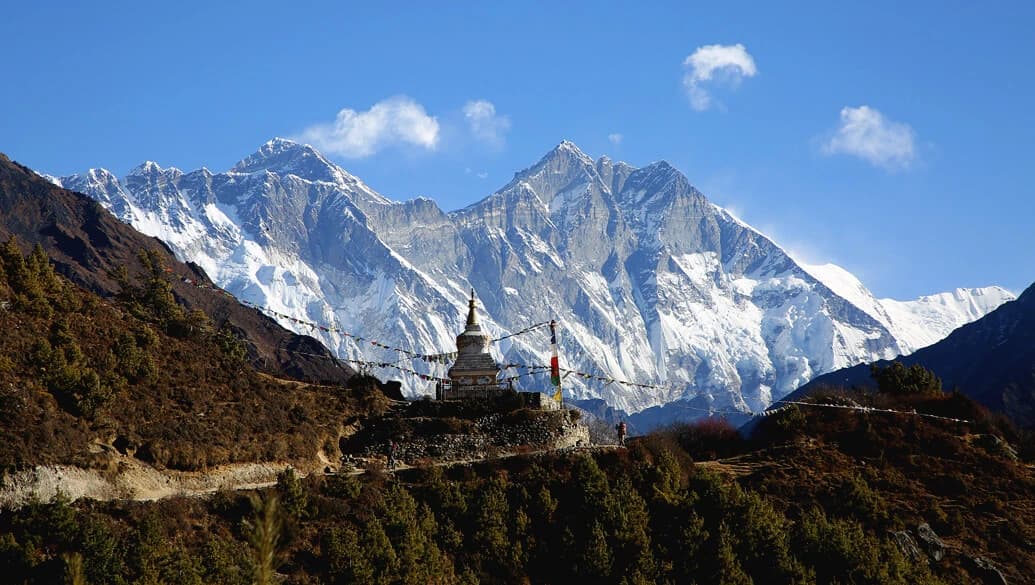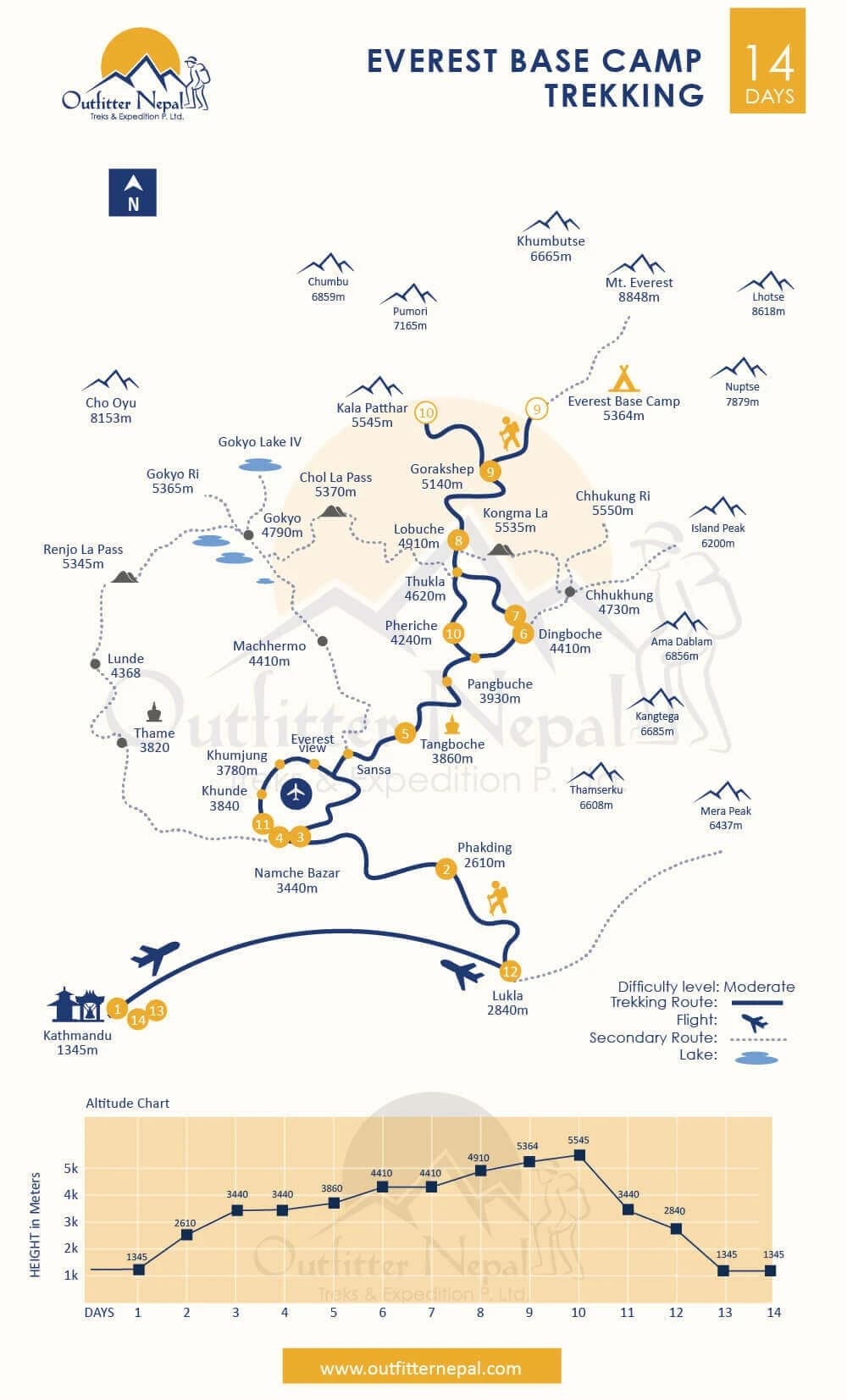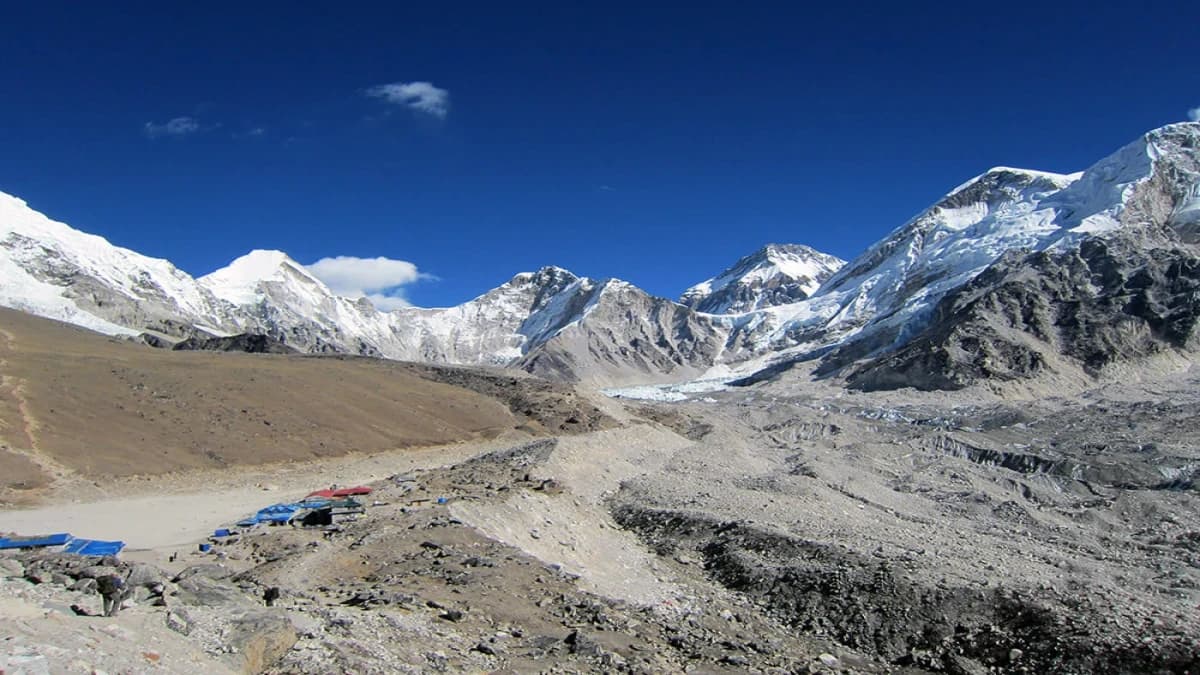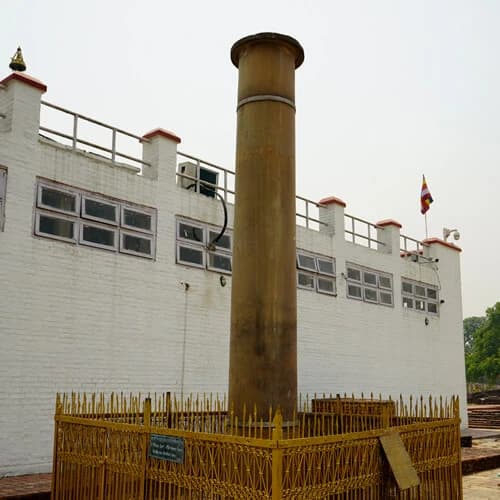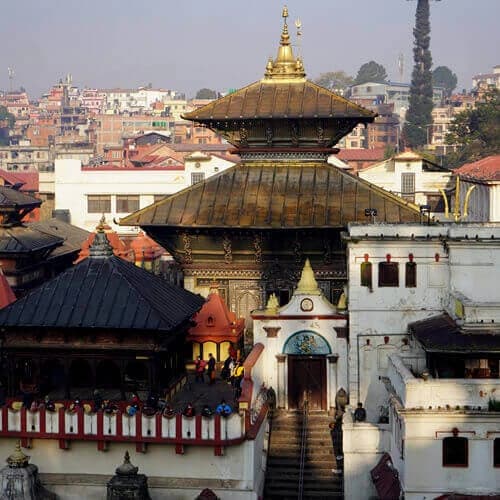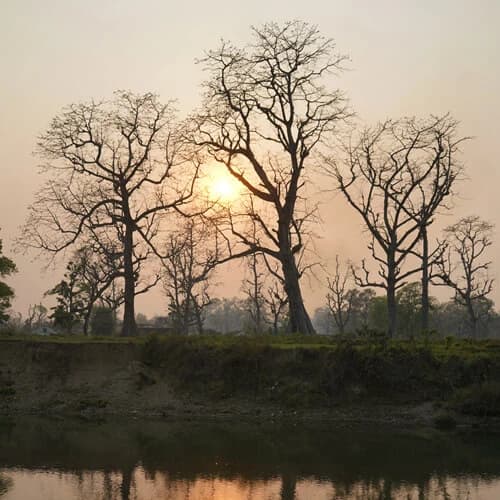Everest Base Camp Small Group Trek Overview
First, let's get acquainted with the Everest Base Camp journey. Because that's the sole reason you're here, to trek to the foothill of the giant Mt. Everest. Some refer to the Everest Base Camp Hiking Route as "the steps to heaven." There's no denying that. Each step you take along the rugged Himalayan trail leads you close to the heavenly beauty that the Everest Region is known for. The trial can get tricky with uneven terrain, but it's ultimately worth it.
Surrounded by giant mountains, you'll feel like you're at the top of the world. The serene beauty of snowy mountain peaks, Khumbu Glacier, and Khumbu Icefall will undoubtedly take your breath away. The fresh wind swiftly passing through the prayer flags makes the scenery even more fascinating. Once you're at the top, you won't feel like coming back.
You will be astounded by the region's remarkable natural splendor from the start of the walk to the finish. There are just no comparisons for the Everest region's mountain views. Four of the world's six tallest mountains (Mount Everest, Mount Lhotse, Mount Makalu, and Mount Cho Oyu) will be directly in front of you. You will be speechless at the area's beauty, which includes the Himalayas, the landscape, old monasteries, waving prayer flags, suspension bridges, and the sound of flowing rivers.
When you witness the stunning mountainous landscape adorned with slow-clad mountains, desolate rocky plains, rich green forests, agricultural lands, and endearing tiny villages, you'll forget everything about the difficult hike and feel thankful for the clean environment around you. The warm "Namaste" or "Tashi Delek" and broad smiles of the locals will inspire you even further. As one learns about the rich Buddhist culture in ancient monasteries, the journey is exciting and spiritual at the same time.
Reach out to us to turn your dream of conquering the Everest Base Camp into reality. The entire team of Outfitter Nepal is working day and night to provide you with an excellent trekking experience. You can rely on our years of experience in the Nepalese Himalayas.
Now, let's go through the highlights of your dream trek to Everest Base Camp for small, and Private group trekking in details.
Best Features of Everest Base Camp Small (Private Group) Trek
- Scenic mountain flight to and from Lukla
- Landing at one of the most thrilling airports, Tenzing Hillary Airport of Lukla
- Trekking through the rich vegetation of Sagarmatha National Park
- Exploring the breathtaking Himalayan terrain of forests, villages, rivers, glaciers, snowy mountains
- Engaging with local Sherpa people and learning their unique culture and lifestyle
- Visiting the old Tengboche monastery, the largest in the Khumbu region
- Hiking to the foothill of the world's highest mountain peak
- Standing tall at Kala Patthar (5644 m) for a panoramic sunrise view of Mt. Everest
- Experienced guides and potters to assist you during the trek
Why join this small private group trek instead of booking the Group Joining EBC trekking package?
You may wonder if the small private group trek to Everest Base Camp is right for you. Well, the answer is straightforward. If you're a group of 1 to 8 people, this trek is for you. You can be a solo traveler, a couple stepping onto the world of adventure together, a small family spending some quality family time in the mountains, or a small group of friends taking onto the remote Himalayas; this EBC small private group trek is meant for you!
To answer the question of why join this Everest Base Camp Private Trek, it all comes down to experience. The small group size enhances your EBC experience as you will get better excess to the services and nature. You don't have to join the bigger groups with other people, making the trip intimate and private. You'll have better access to the information shared by the guide, you'll get better quality food as it is prepared in small quantities, you don't have to wait for your group members who are slow hikers and take your own pace, and most importantly, you can customize the itinerary based on your preference as you trek. Isn't it fortunate to get this kind of luxury in the remote Himalayas?
What to expect from the Everest Base Camp Private Group Trek?
As soon as you land in Lukla, you'll be welcomed by the astonishing vistas of the Himalayas. The scenery improves as you trek to Namche Bazaar, Tengboche, Dingboche, Lobuche, Gorekshep, and finally, Everest Base Camp. Well, the journey doesn't end here. In the following early morning, you'll head to Kala Patthar from Gorekshep to experience the spectacular Himalayan sunrise casting golden hues against Mt. Everest and surrounding mountains. The panoramic mountain views from the trek's highest point, Kala Patthar, at 5644 meters, look like something out of a fairytale. It is actually Kala Patthar from where you can see the full face of Mt. Everest.
To acclimatize well to the increasing altitude and the decreasing oxygen level, we take two rest days: one at Namche Bazaar and another at Dingboche during our ascent. You can explore the Sherpa villages and Buddhist monasteries and learn about their culture during your leisure time. It is a must to pay a visit to the ancient Tengboche Monastery, which has gained the name of the "Spiritual Centre of Khumbu." The overall experience feels like a dream.
Why trek to Everest Base Camp in private group with Outfitter Nepal?
You may find hundreds of websites and companies on Google that provide trekking services to the Everest Base Camp, but not all of them are trustworthy. Travelers must conduct their own research before making any travel plans because there are innumerable tales of people being conned. But Outfitter Nepal is different. We are a reputable regional business recognized by the government with more than 20 years of expertise in the Nepalese trekking industry. The glowing testimonials provided by our visitors on TripAdvisor and our website are evidence of this.
- For your EBC private group trek, you may rely on Outfitter Nepal for the following additional reasons:
- We are mindful of and have always met our client's expectations.
- Our primary goals are the safety and security of our clients. The priority for us is ensuring customer satisfaction.
- We take our trips seriously while making them fun.
- We exclusively work with local guides and porters who are trained and experienced. We evaluate our staff's performance regularly.
- Many languages, including the frequently used English, are fluently spoken and understood by our local, experienced hiking guides.
- We provide some of the essential hiking equipment you'll need, such as an oximeter, first-aid kit, sleeping bag, down jacket, duffel bag, etc.
- We encourage responsible travel and practice sustainable tourism as eco-friendly tour operators.
- We pledge to provide you with the best services and the best package.
- We have set departure dates and never cancel on our customers.
- Last-minute reservations are accepted here.
Major Attractions of Everest Base Camp Small (Private Group) Trek
Thrilling flight to Lukla airport
Brace yourself! You're going to board a flight to one of the most dangerous airports in the world. Lukla Airport, also known as Tenzing Hillary Airport, has a small runway of 450 m in length and 20 m in width and lies at a frightening hillside slope of 12% grade, making the landing experience such a thrill. But worry not; the airplane captains are well-trained to ensure a safe landing.
Note: The flights to Lukla usually take off from Kathmandu. However, during peak seasons, the Lukla flights take off from Ramechhap Airport, which is 125 meters drive from Kathmandu. Outfitter Nepal will take care of your airport transfers.
Sagarmatha National Park, with its rich flora and fauna
Sagarmatha National Park, a UNESCO World Heritage site, has been home to endangered animals and birds for years. During your Everest Base Camp hike, you'd walk through the deep forests, the natural habitat of unique animals like Red Panda and Snow Leopard. If you're fond of birds, it would be a pleasant bird-watching hike for you.
Note: Tourists no longer have to issue TIMS cards to trek in the Everest region. However, there's a requirement for a Khumbu Pasang Lhamu Rural Municipality entry permit to enter the Khumbu region for NRs. 2000 (~ USD 20) for all nationalities except for Nepalese.
The mesmerizing mountain views on the route
The Everest Base Camp Hiking trail in itself is a work of art. The more you ascend altitude, the more precise the enchanting views of the region's mountain peaks will be. The glorious mountain sunrise you get to witness from the highest point of the trek, Kala Patthar, is a lifetime opportunity. The golden hues perfectly decorate the full face of Mt. Everest, along with the surrounding mountains.
Getting to the base of the highest peak in the world
It's surreal to stand at the foot of the tallest mountain peak in the world. The base camp is surrounded by some of the most famous mountains at the foot of the Khumbu Glacier. It provides stunning views of the Himalayas and glaciers. The achievement of reaching the Everest base camp alone is significant. Only during the day is it possible to visit the Everest Base Camp; overnight stays are prohibited. The enormous Khumbu Glacier and Khumbu Icefall are two of the most breathtaking sights you'll view from the location. Before leaving this little corner of happiness, take as much as possible. The time you spend in base camp is the most rewarding moment of the entire trek.
Breathtaking Himalayan vistas from Kala Patthar
Do you realize that the base camp prevents us from seeing the complete face of Everest? But don't worry; a short climb from Gorakshep will get you to Kala Patthar, a rocky ridge that is an excellent site to view Mount Everest. Located above the Everest Base Camp, Kala Patthar (5545 m) offers 360-degree views of Everest and the surrounding mountains. The EBC trek isn't complete without a visit to Kala Patthar. You can observe one of the most beautiful mountain vistas in the world from the top of this rock, where a wide panoramic picture of Everest and Ama Dablam can also be seen. In addition, when the sun's rays touch the summits of Everest at daybreak, it looks like a dream.
Acclimatizing at Namche and learning about Sherpa culture
The EBC small group trek starts at Namche Bazaar, which is 3440 meters above sea level. This teeny, bustling market village has everything you could ever want to buy, including Tibetan antiquities and gear for trekking and mountaineering. Namche acts as a memorial for several mountaineering expeditions and provides information on the culture and way of life of the Sherpa people. In this tiny Himalayan village, yak cheese and butter are very popular. You will stay in Namche Bazaar for a day to help you adjust to the altitude, giving you time to explore the area and discover Sherpa culture. It will be much more memorable if you interact with the welcoming folks.
Visiting the historic Tengboche Monastery
Tengboche Monastery is one of the most popular tourist attractions in the Khumbu region. This historic monastery is a revered religious site as well as a fantastic location to view the mountain peaks. Lama Gulu rebuilt the monastery in 1961 after the earthquake completely destroyed it in 1934. In 1989, the monastery caught fire once more. It was effectively restored later. Despite these terrible occurrences, the Tengboche Monastery is still the oldest and largest monastery in Khumbu. Here, you can discover more about Buddhism and its culture.
